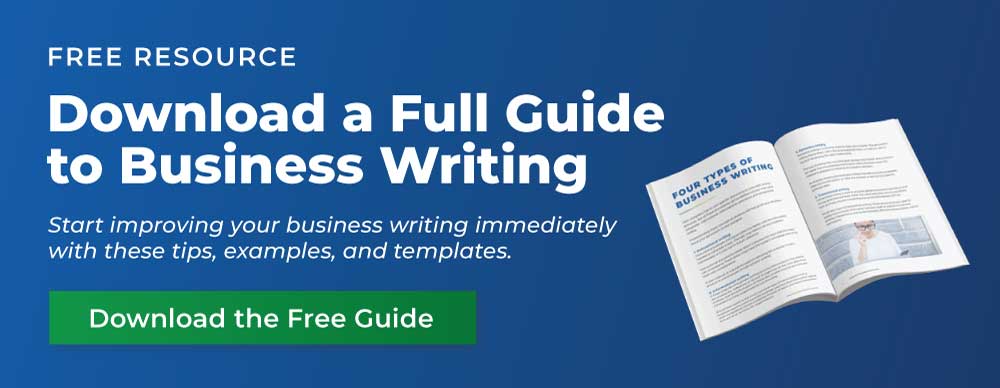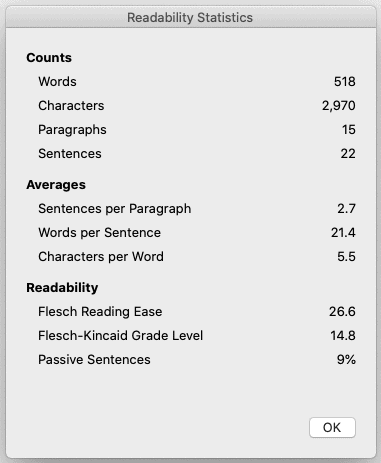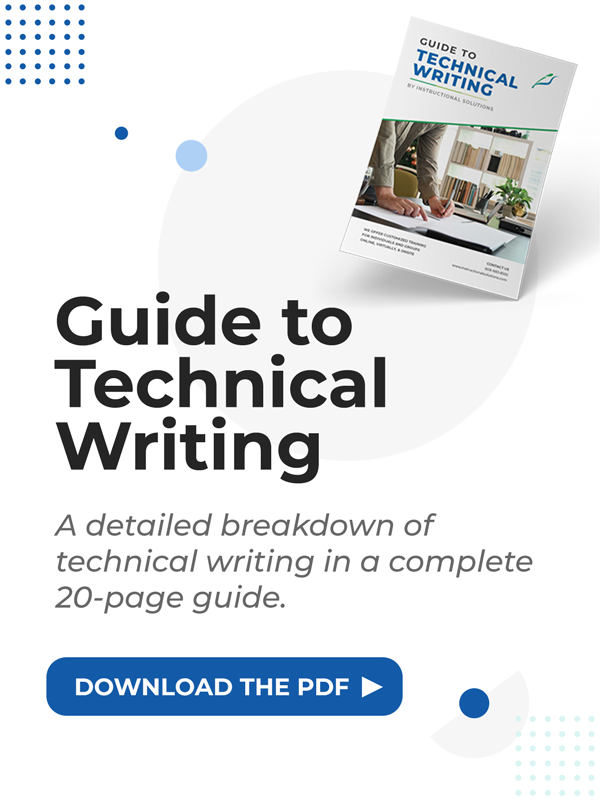A readability score is a number that tells you how easy it will be for someone to read a particular piece of text. The Readability Measurement Tool that is built into all versions of Microsoft Word and Outlook is an excellent tool that provides four particularly helpful metrics on the clarity of your sentence structure.
It is not enough to write so that you can be understood; you must write so clearly that you cannot be misunderstood.
- Ralph Waldo Emerson
How to enable the Readability Tool in Microsoft
The Readability Measurement will assess:
- Words per sentence (average).
- Percentage of passive sentences.
- Flesch Reading Ease score.
- Flesch-Kincaid Grade Level
1. Words per sentence
In general, the longer the sentence, the harder it becomes for your reader to follow along. That's not to say you should always write in short sentences. Instead, strive for a variety that makes for interesting and engaging reading.
2. Passive Voice Score
The passive voice score measures the percentage of sentences written in the passive voice as the ratio of passive sentences over active sentences.
The lower the score, the better. Active sentences are nearly always easier to read and understand, thus making your message clearer and more persuasive. Aim for a score less than 20%.
3. The Flesch Reading Ease (FRE)
The Flesch Reading Ease score is the standard test of readability used by The U.S. Department of Defense for its documents and forms. It indicates how easy it is to read a given document.
The results can be between 0 and 100. The higher the score, the easier it is to understand what you have written.
For example, a typical issue of Reader's Digest earns an FRE score of around 65 while Time Magazine scores in the low 50s. Lincoln's Gettysburg Address scores 74.2. One way to score higher is to use shorter sentences.
The results can be interpreted as follows:
- 0-29 - very confusing & hard to read
- 30-49 - difficult to read
- 50-59 - fairly difficult
- 60-69 - standard
- 70-79 - fairly easy
- 80-89 - easy
- 90-100 - very easy
Recommendation: A score of 60 or more. Higher is better. Even for business documents, a score of 60 is very achievable, and it takes only a few edits to obtain it.
4. Flesch-Kincaid Grade Level (FKGL)
The Flesh-Kincaid Grade Level measure translates the Flesch Reading Ease measure to a grade level. The grade level means the number of years of education generally required to understand a text. For example, a score of 9.4 would indicate that the text is expected to be understandable by an average student in the 9th grade. Most newspapers in the U.S. are written at a seventh- to eighth-grade level.
Recommendation: 8.0 to 10.0 is a good target, but lower is better because it reflects language clarity, not content complexity. Realistically, aim for a score of 12 for complex reports and proposals.
In business writing one should "write to express, not to impress." This does not mean you should dumb down your ideas and concepts. Instead, it requires you to express them with clean language.
How to use the tool
These measurements are not perfect. They only assess the textual structure of your document, not content. But, they will provide snapshot measurements to diagnose the textual clarity in your documents.
We highly recommend you take advantage of this tool, already available in Microsoft Outlook and Word.





